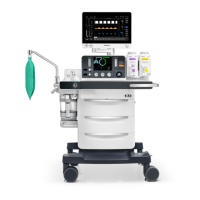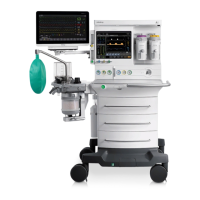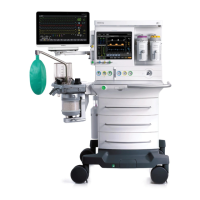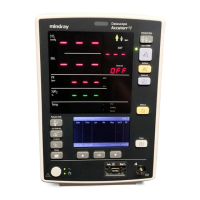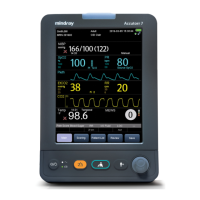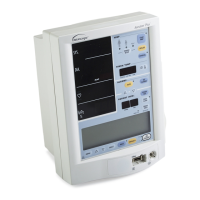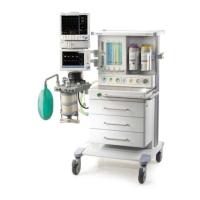Introduction Calibration
4 - 2 046-006272-00 A7™ Service Manual
4.1 Introduction
This section provides detailed information required to properly test and calibrate the A7 anesthesia
system. Calibration consists of making mechanical and electrical adjustments with the proper test
equipment. The instrument should be tested and calibrated after repairs have been completed or at
regular intervals as part of a periodic maintenance procedure.
NOTE: Both calibration and a functional test must be performed to verify
complete and proper operation.
Ensure that all testing materials, including drive gas, breathing circuits, test fixtures, tools and
documents are available and current, calibrated and in good working order prior to beginning.
4.2 Calibration Warnings, Precautions, and Notes
4.2.1 Warnings
WARNING: For continued protection against fire hazard, replace all fuses with the
specified type and rating.
WARNING: In order to prevent an electric shock, the machine (protection class I)
may only be connected to a correctly grounded mains connection
(socket outlet with grounding contact).
WARNING: Remove all accessory equipment from the shelf before moving the
anesthesia machine over bumps or on any inclined surface. Heavy top
loading can cause the machine to tip over causing injury.
WARNING: Possible explosion hazard. Do not operate machine near flammable
anesthetic agents or other flammable substances. Do not use
flammable anesthetic agents (i.e., ether or cyclopropane.)
WARNING: The use of anti-static or electrically conductive respiration tubes, when
utilizing high frequency electric surgery equipment, may cause burns
and is therefore not recommended in any application of this machine.
WARNING: Possible electric shock hazard. The machine may only be opened by
authorized service personnel.
WARNING: Compressed gasses are considered Dangerous Goods/Hazardous
Materials per I.A.T.A. and D.O.T. regulations. It is a violation of federal
and international law to offer any package or over pack of dangerous
goods for transportation without the package being appropriately
identified, packed, marked, classified, labeled and documented
according to D.O.T. and I.A.T.A. regulations. Please refer to the
applicable I.A.T.A. Dangerous Goods Regulations and /or the Code of
Federal Regulations 49 (Transportation, Parts 171-180) for further
information.
4.2.2 Cautions
CAUTION: Refer to the ‘‘Periodical Maintenance Schedule’’ on page 3-2 for
assistance when performing scheduled periodic maintenance.
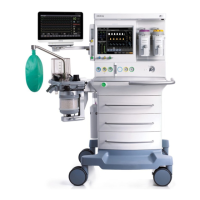
